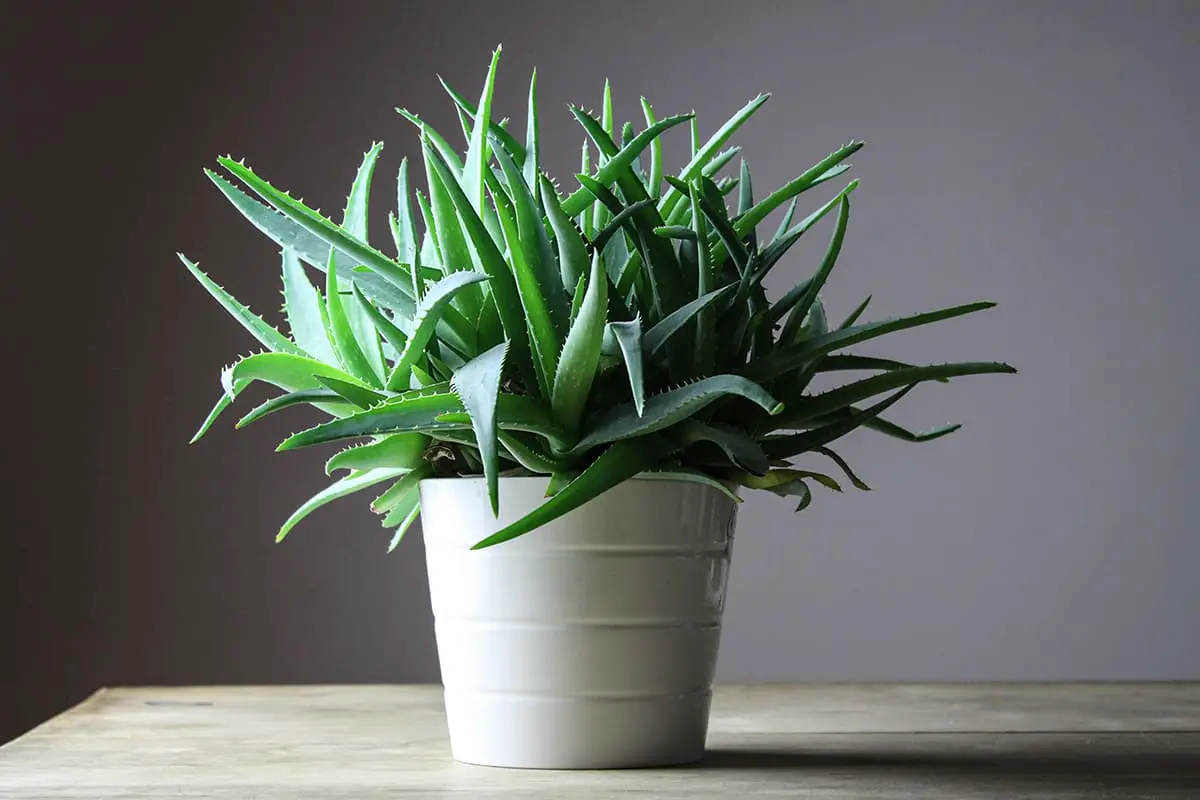The joy of bringing a new plant home can quickly turn into a challenge, especially when it comes to keeping up with their feeding schedules. Fortunately, there are indoor plants that ask for nothing more than a spot with adequate light and a sip of water now and then, bypassing the need for fertilizer entirely in their first year.
Perfect for those of us who want the benefits of indoor greenery—like air purification and aesthetic appeal—without the added task of remembering when to fertilize.
Table of Contents
- Snake Plant (Sansevieria)
- ZZ Plant (Zamioculcas Zamiifolia)
- Spider Plant (Chlorophytum Comosum)
- Pothos (Epipremnum Aureum)
- Chinese Evergreen (Aglaonema)
- Cast Iron Plant (Aspidistra Elatior)
- Peace Lily (Spathiphyllum)
- Aloe Vera
- Jade Plant (Crassula Ovata)
- Rubber Plant (Ficus Elastica)
- Philodendron
- Air Plants (Tillandsia)
- Haworthia
- Christmas Cactus (Schlumbergera)
- String Of Pearls (Senecio Rowleyanus)
Snake Plant (Sansevieria)
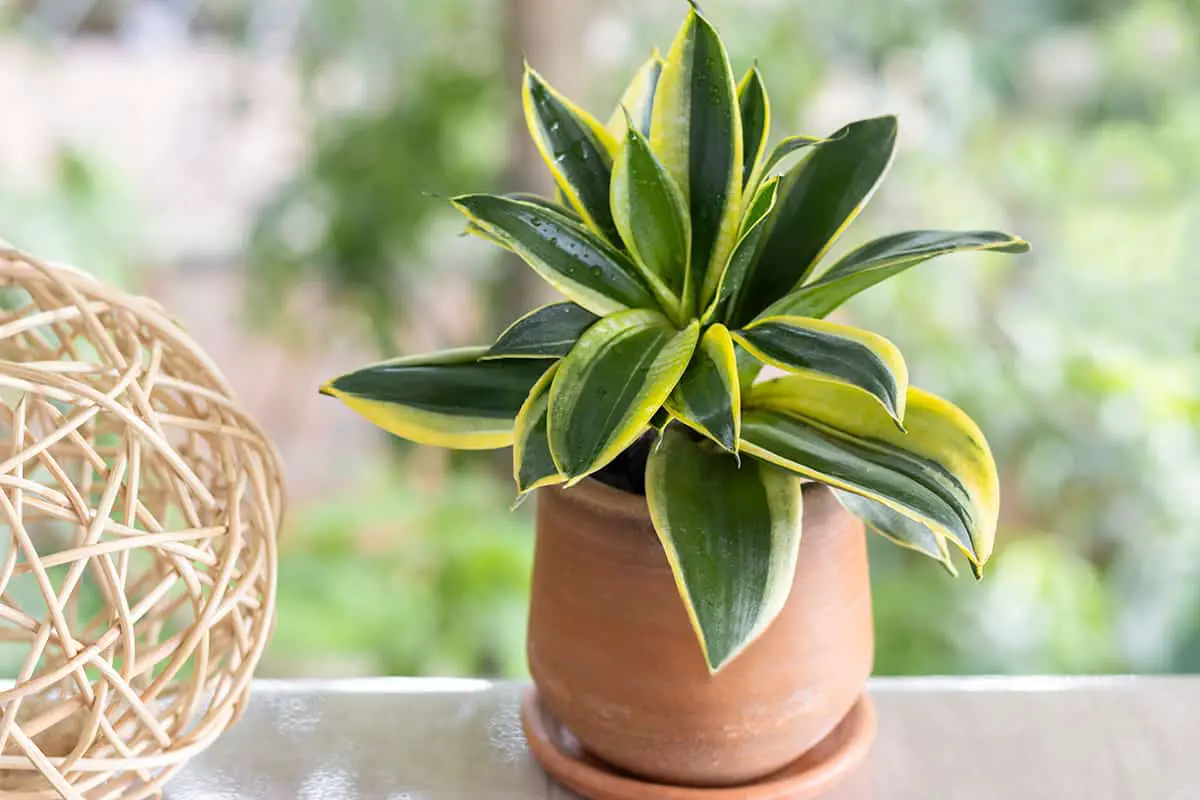
The Snake Plant is a resilient indoor option for your home or office. It stands out for not requiring fertilizer often. You will also appreciate its adaptability to various lighting conditions and infrequent watering needs.
Sansevieria possesses long, upright leaves that present an architectural look. These leaves may display a mix of green tones and occasionally yellow edges. The plant’s structured design adds a touch of elegance to any room. Importantly, it’s known for improving indoor air quality.
You can find Sansevieria in different sizes, perfect for diverse spaces. Dwarf varieties fit well on desks, whereas taller types make striking floor accents. This plant’s low maintenance extends to its soil requirements, as it prefers well-draining mixtures and to be left dry between waterings.
ZZ Plant (Zamioculcas Zamiifolia)
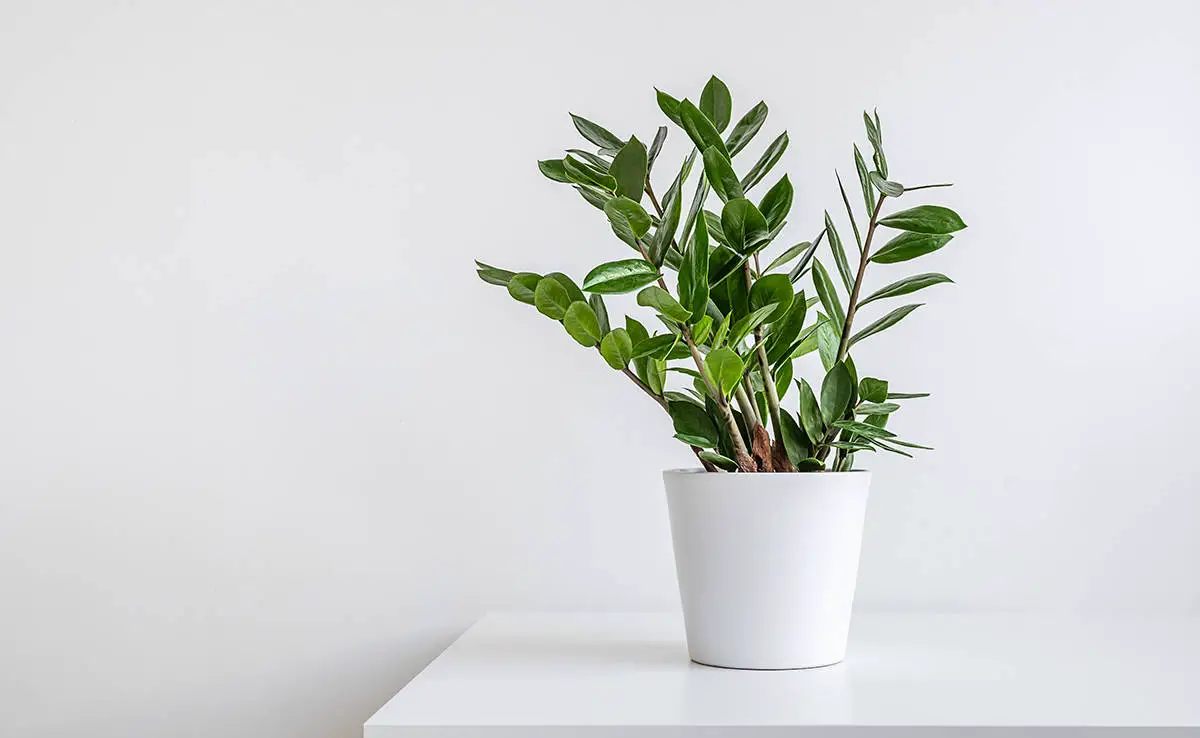
ZZ plants enhance your space with their shiny leaves and strong form. They’re perfect houseplants. You can keep your ZZ plant looking good without fertilizers. Water sparingly, only when the soil gets dry. This helps prevent overwatering, common with indoor plants.
ZZ plants are drought-tolerant. Your ZZ can thrive even when you miss a watering or two. Their rhizomes store water, making them very resilient. They need minimal light, tolerating low-light corners where other plants might struggle. Bright, indirect light is best, but they adapt to less.
Zamioculcas zamiifolia is slow-growing. It doesn’t outgrow its space fast. You won’t need to repot often. It’s a plant that requires minimal intervention. This feature makes them great for beginners or if you are frequently away.
Remember to keep the leaves dust-free. This keeps your plant healthy, allowing photosynthesis to occur unimpeded. Wipe the leaves with a damp cloth when you see dust build up. Be gentle, as aggressive cleaning can damage the leaves.
Keep your ZZ plant safe from cold drafts and heaters. Stable conditions help maintain its health. Always handle with care, as all parts of the plant can be harmful if ingested. Keep it away from pets and young children.
Spider Plant (Chlorophytum Comosum)
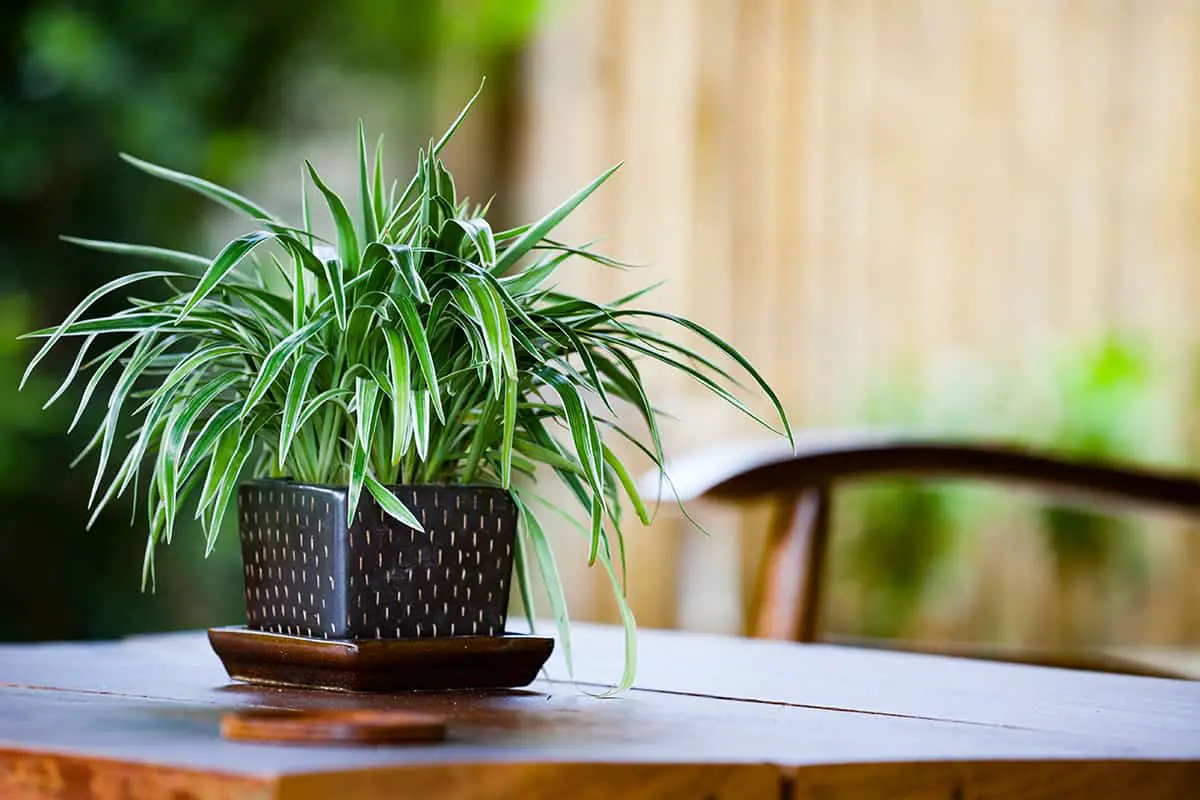
The Spider Plant, or Chlorophytum comosum, thrives without extra fertilizer. When you choose this plant, you are selecting one of the most adaptable and undemanding houseplants. Spider Plants perform well in a range of indoor environments. They prefer bright, indirect sunlight but can tolerate lower light conditions, making them suitable for various rooms in your home.
Your Spider Plant will produce arching leaves that create a lush display. The plant is known for its air-purifying qualities, as it can help remove common household toxins from the air. With adequate water and moderate temperatures, you’ll witness occasional growth of small white flowers. These blossoms are an added bonus to the Spider Plant’s easy-going nature.
When you water your Spider Plant, ensure the soil is moistened throughout. Water draining out of the pot’s bottom signifies thorough watering. After watering, it’s essential to drain away any excess water. This prevents waterlogging, which could harm the plant roots.
Pothos (Epipremnum Aureum)
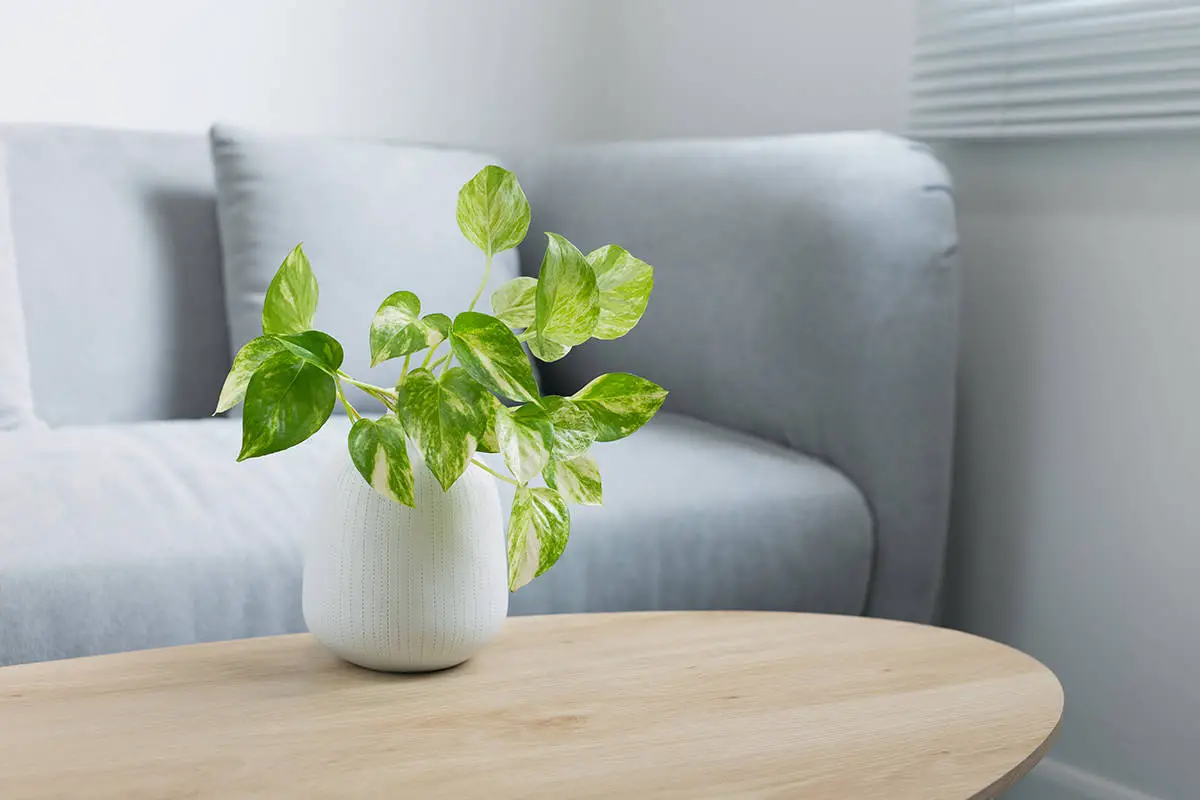
Pothos, also known as Epipremnum Aureum, is a popular choice for your indoor space. It’s a hardy plant that thrives even without fertilizer for the first year.
The Pothos enjoys conditions with indirect sunlight. Place it in a room with a window, but out of direct sun’s reach. You’ll find its leaves remain vibrant and healthy.
Wait for the top inch of soil to dry out before watering your Pothos. Overwatering can harm the plant, so it’s better to err on the side of caution.
When it comes to growth, the Pothos is a champion. Thanks to its vigorous nature, this plant can grow without extra nutrients early on. If you notice slower growth after a year, consider a gentle fertilizer. Remember, your Pothos is forgiving and doesn’t demand much to remain an attractive part of your home.
Chinese Evergreen (Aglaonema)
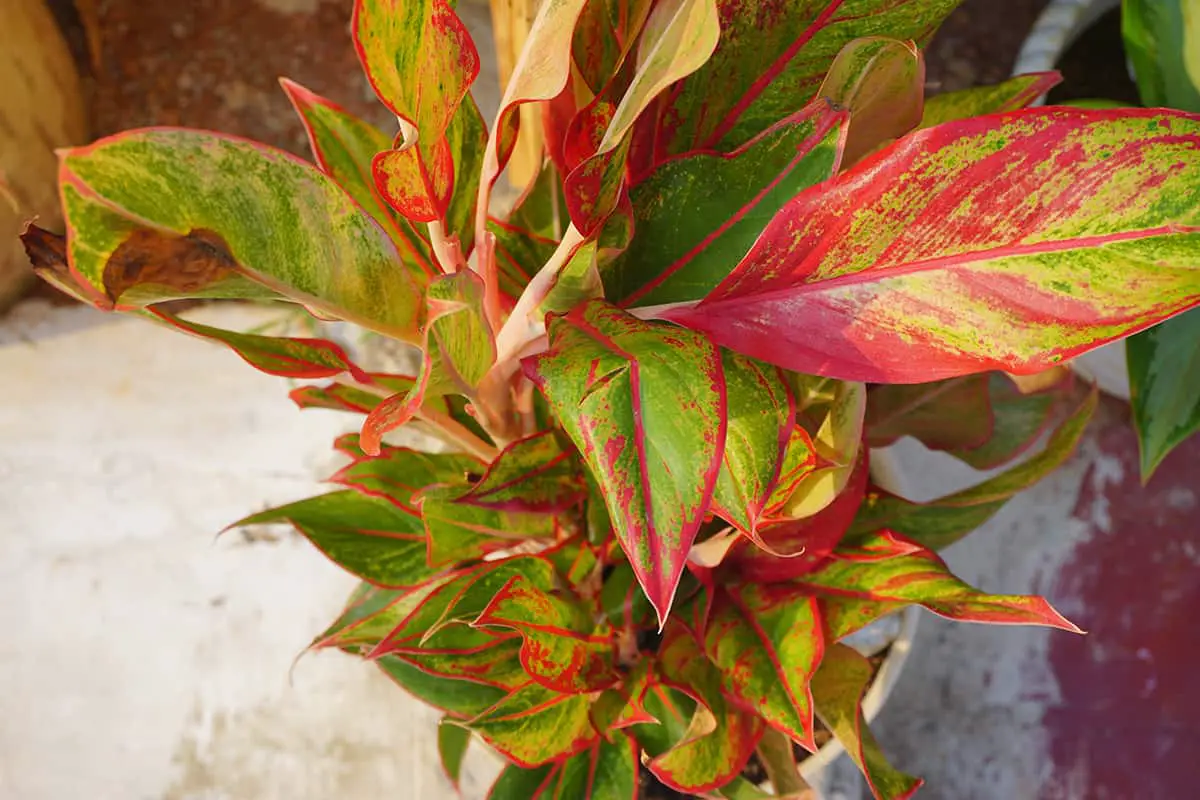
Chinese Evergreen plants make your indoor space greener without the need for regular fertilization. These lush plants are native to Southeast Asia and thrive in low-light conditions. The Aglaonema can enhance your home with minimal care.
Your Chinese Evergreen will grow effectively in shaded areas. It’s suited for spaces far from bright sunlight. This plant’s tolerance for lower light and humidity levels makes it a versatile houseplant. You don’t need to fertilize it often to maintain its vibrant foliage.
Care for your Chinese Evergreen by keeping the soil consistently moist. Overwatering can harm the plant, so ensure proper drainage. Its leaves can vary, with some displaying solid green and others displaying patterned designs.
Immediate signs of this plant’s appeal are its bushy appearance and ability to purify indoor air. You can keep an Aglaonema in your home or office to introduce a natural element. Remember, this species can often manage with the nutrients available in a standard potting mix.
Cast Iron Plant (Aspidistra Elatior)
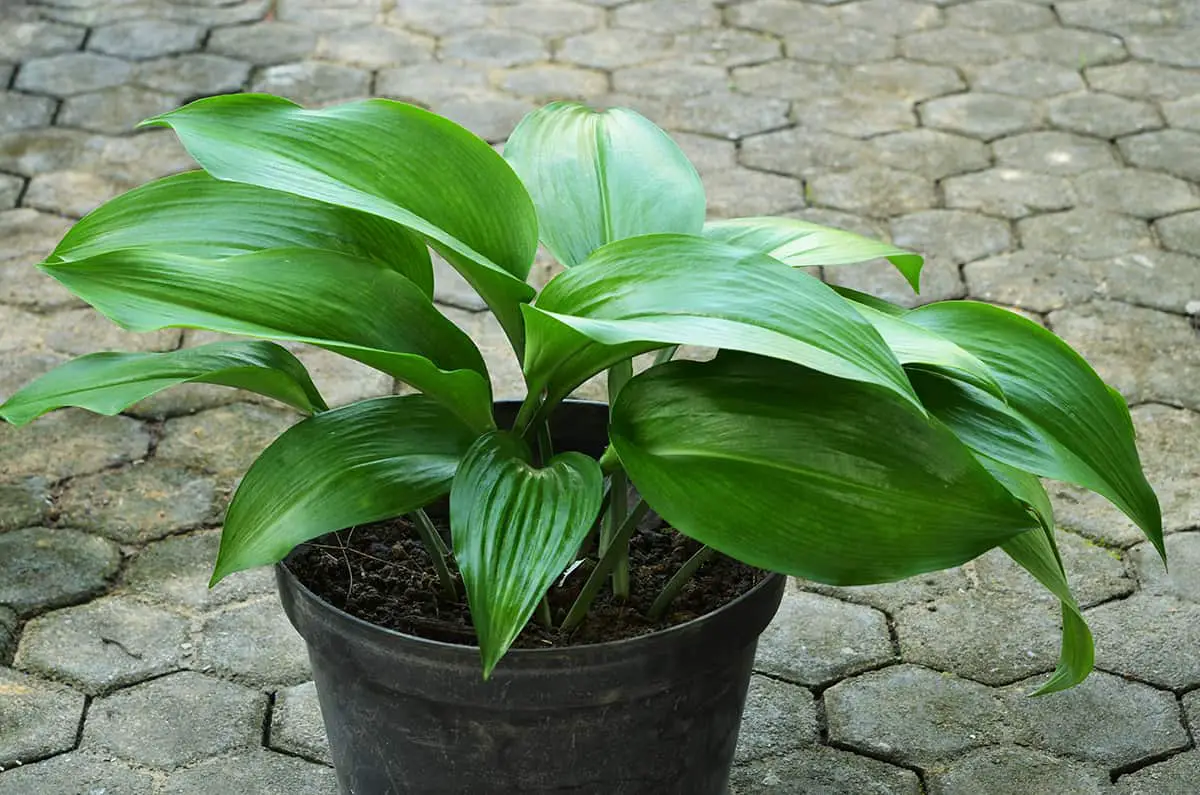
The Cast Iron Plant earned its name for good reason. You will find this hardy indoor perennial highly tolerant to neglect. If you struggle to remember to fertilize your plants, Aspidistra elatior is perfect for you.
It thrives in low light conditions. A dark corner of your room suits this plant well. Its resiliency also extends to artificial light environments, making it a staple in office spaces.
Moderate watering keeps it healthy. Allow the soil to dry out slightly between watering sessions. Overwatering is a common mistake but one that your Cast Iron Plant can withstand better than most.
Aspidistra elatior exhibits lush green leaves. These leaves are broad, glossy, and can refresh the look of any indoor setting. Their durability is remarkable; they resist pests and wilting.
This plant seldom needs repotting. It grows slowly and prefers being left undisturbed.
Peace Lily (Spathiphyllum)

The Peace Lily stands out for its ease of care and low need for fertilizer. Initially, understanding its needs will set you up for success. In low light, this hardy plant requires even less fertilizer, possibly only half the usual amount. With more sunlight, consider a regular strength application, but sparingly.
Peace Lilies boast glossy green leaves and elegant white blooms. They typically grow between 1 to 4 feet in height. For indoor environments, this plant is a popular choice because it can flourish in lower light conditions. It’s a forgiving option if you forget to water, quickly perking up after receiving moisture.
Maintaining moist soil is key for the Peace Lily, without allowing the soil to become overly dry. Over-fertilization can cause harm, leading to browning leaf tips. Therefore, moderation is essential. When you do fertilize, opt for a diluted solution during growth periods in the spring and summer.
Aloe Vera
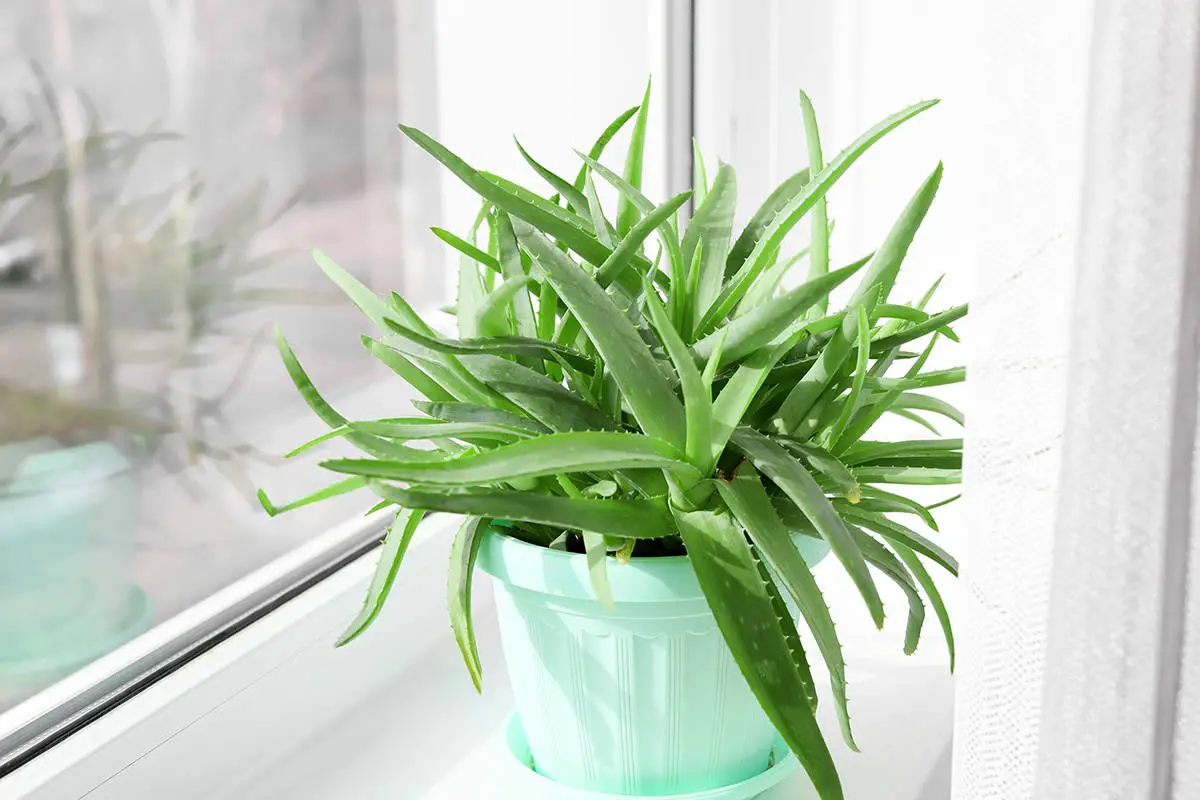
Aloe Vera thrives indoors with minimal care. You can grow it in a bright spot, like a sunny windowsill. A south-facing window works well, but east or west facing will do. Its watering needs are modest, making sure not to overwater is key.
This succulent is tough and can reach up to two feet. Its thick leaves contain a gel, famous for soothing burns. Placing Aloe Vera in your kitchen is handy for quick access to its healing properties.
In the right conditions, Aloe Vera seldom needs fertilizer. Ensure it has well-draining soil and sufficient light. Monitor its growth; if it’s thriving, fertilizer isn’t necessary.
Indoor Aloe Vera rarely blooms. This doesn’t affect its growth or gel quality.
Jade Plant (Crassula Ovata)
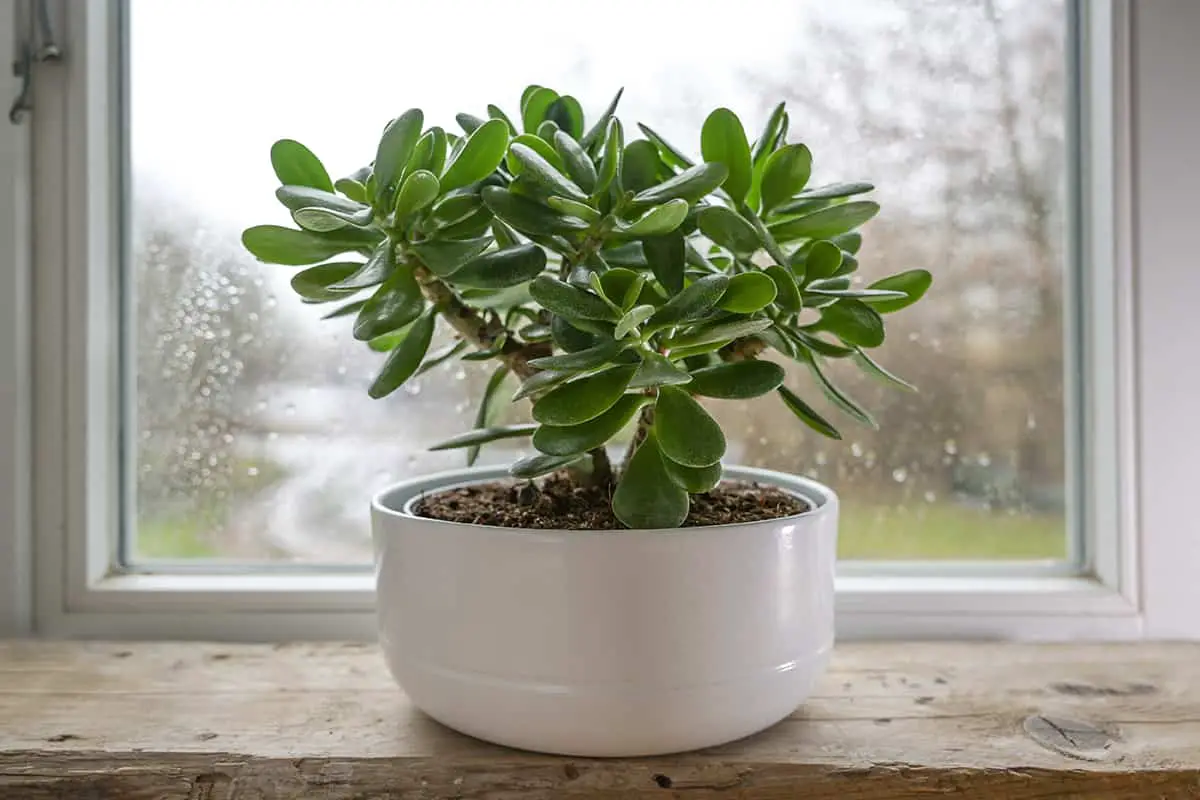
If you’re interested in an easy-care indoor plant, the Jade Plant is an excellent choice. Your Jade Plant thrives without frequent fertilizing. This succulent adapts well to indoor environments. With thick, glossy leaves, it stores water, lessening your need to water regularly.
Crassula Ovata, often recognized as a symbol of good luck, brings more than beauty to your home. It can grow into a dense, tree-like shape. This robust growth occurs even without the aid of frequent fertilizer applications. When it does need a boost, a balanced, liquid houseplant fertilizer applied sparingly will suffice. Remember to only fertilize your Jade Plant during the growing seasons of spring and summer.
Proper care ensures your Jade Plant remains a resilient and attractive feature in your space. Watch for common pests such as mealybugs and manage them promptly. Keep your Crassula Ovata in a stable environment, and it will reward you with minimal maintenance needs and enduring appeal.
Rubber Plant (Ficus Elastica)
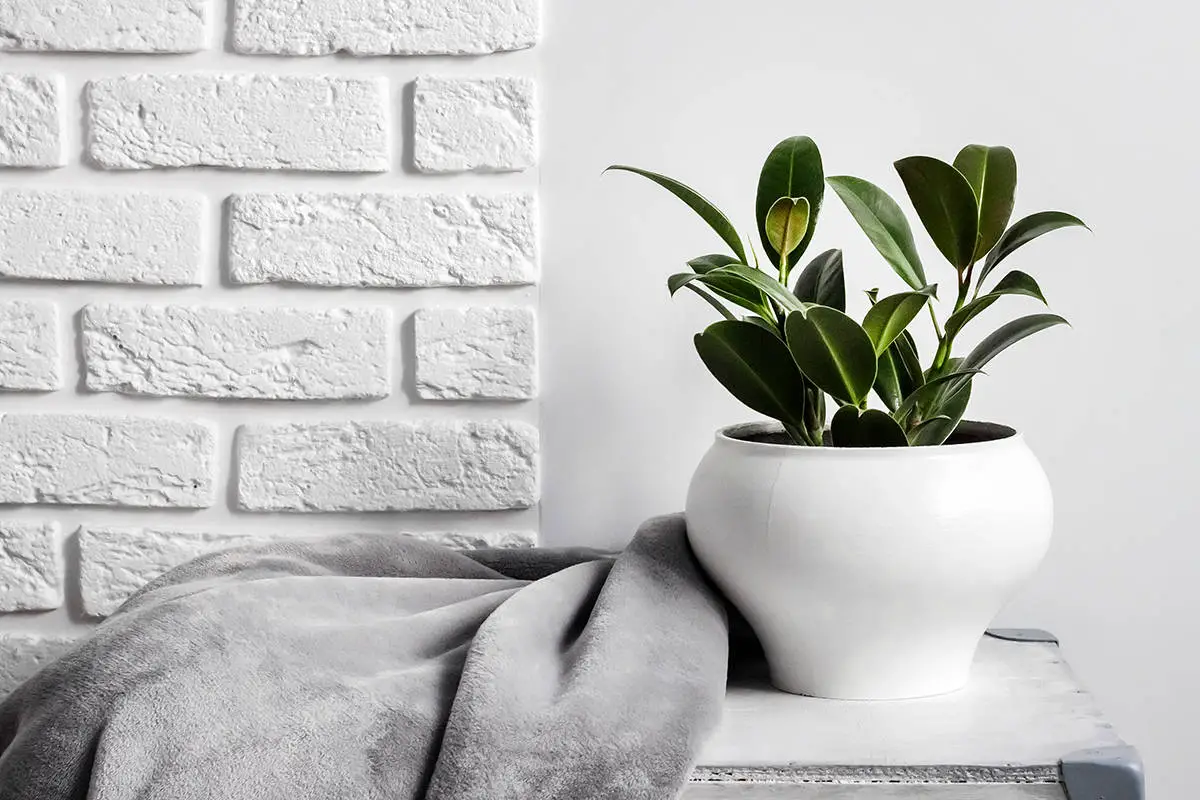
The Rubber Plant, or Ficus elastica, is a robust indoor plant. You can recognize it by its shiny, dark green leaves. They bring life to your space without demanding frequent care. This plant adapts to a range of indoor conditions.
Your Rubber Plant thrives in bright, indirect light. An east-facing window is ideal. It can endure low light but grows best with morning sun. Aim for room temperatures between 60-65 °F at night and 75-80 °F during the day.
Water your plant when the top inch of soil feels dry. Over-watering can harm it. This plant prefers moderate humidity. In a dry climate, you may mist it occasionally.
A well-draining soil mix suits the Rubber Plant. It’s not demanding in terms of feeding. You seldom need to fertilize it. If you decide to, do it sparingly.
Philodendron
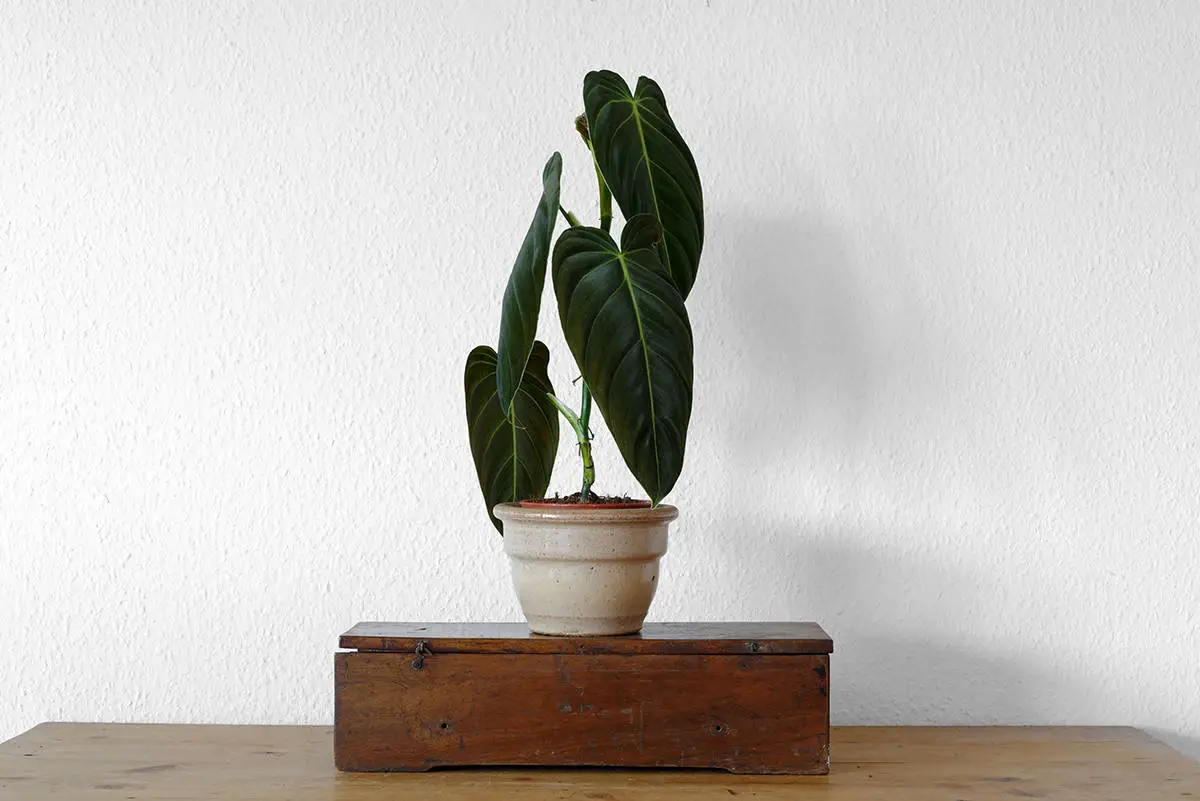
Philodendrons are hearty indoor plants. You don’t need to fertilize them frequently. These plants prefer light watering and indirect sunlight.
Their leaves are heart-shaped and come in a variety of sizes. A philodendron’s vines can grow long. They add greenery to your space without much effort. This plant adjusts well to the low light conditions indoors.
You should water your philodendron when the top soil feels dry. Overwatering can harm them. Keep the soil moist but not soggy. Your philodendron will grow best between 65°F to 80°F.
Occasional feeding can promote leaf growth. Use a nitrogen fertilizer sparingly for a more vibrant plant. Remember to dilute the fertilizer to half strength. This helps avoid any potential damage from overfeeding.
Air Plants (Tillandsia)
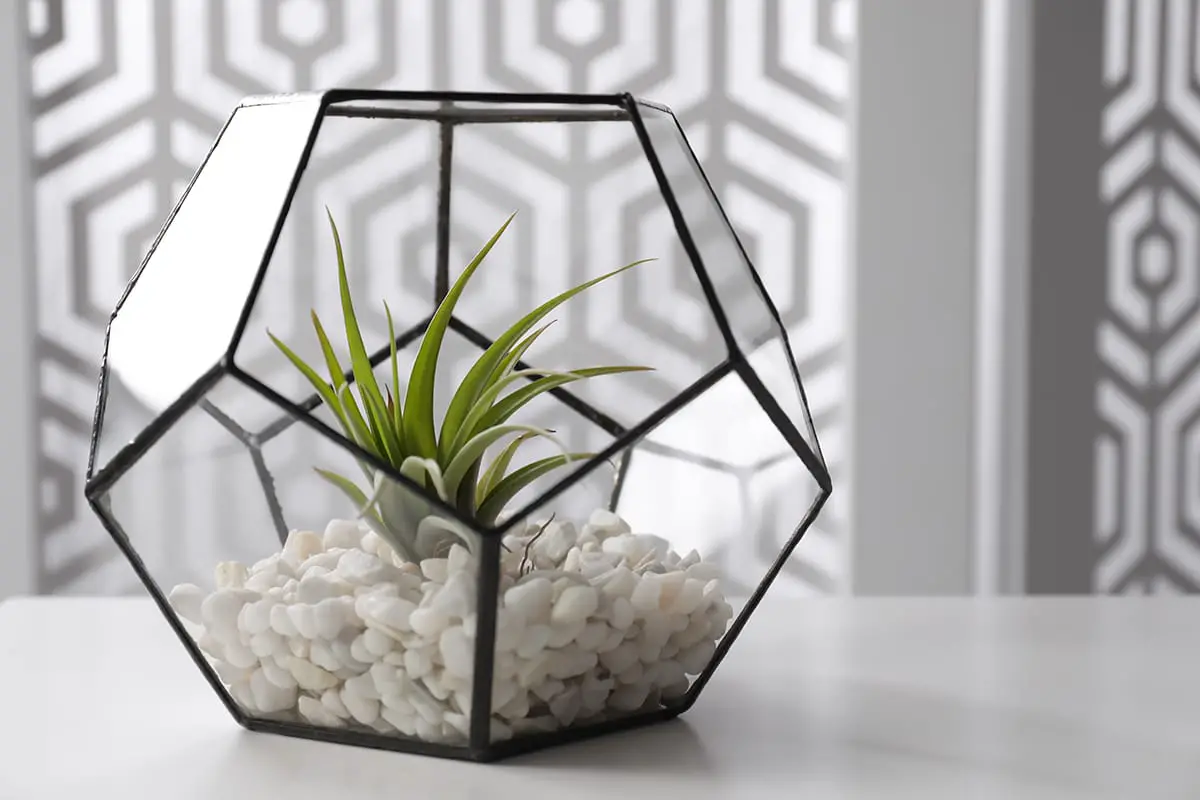
Tillandsia, known as air plants, thrive without soil. You’ll find ease in their care regimes, as they don’t need fertilizer to grow. These unique plants absorb water and nutrients through their leaves.
Place air plants in bright, indirect sunlight. They prefer warm indoor temperatures ranging from 65-85°F during the day. Ensure good air circulation around your Tillandsias. Mist or soak them weekly, letting them dry fully afterward.
For watering Tillandsias, use three methods: misting, rinsing, or soaking. Submerge the air plant in water for 20-30 minutes if soaking is preferred. After watering, shake off excess water to prevent rot.
Air plants may bloom small flowers, adding a pop of color to your space. They offer an exquisite variety, with some boasting silvery foliage due to tiny, moisture-absorbing hairs. These plants require less watering, adapting well to drier conditions.
Haworthia
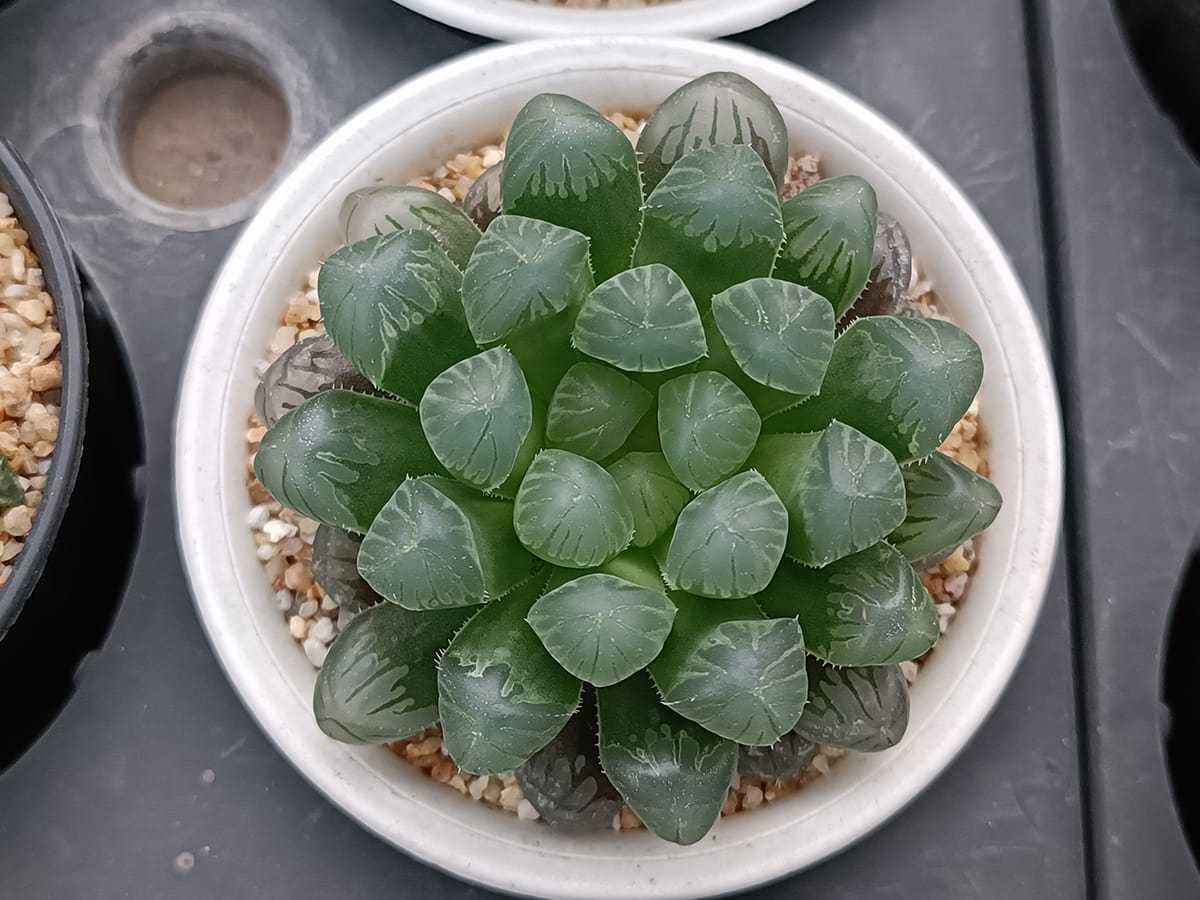
In your search for low-maintenance indoor plants, you may discover Haworthia. This succulent is known for its hardiness and ability to thrive without fertilizer. Haworthia plants feature thick, fleshy leaves that store water, permitting them to withstand dry conditions. They are suitable for your indoor garden, especially if you prefer plants that don’t demand constant care.
Haworthia’s ease of care makes it an excellent choice for beginners. You’ll appreciate its resilience, as it requires minimal watering and can grow in lower light conditions typically found indoors. The plant doesn’t need frequent fertilizing; in fact, it can do well without extra nutrients for long periods.
These plants come in various forms, often small and rosette-shaped, making them perfect for desk tops or shelves. Their distinctive appearance, with striped patterns or transparent tips, adds visual interest to any space. You can keep Haworthia healthy in a pot with good drainage and soil that allows for proper air flow.
Christmas Cactus (Schlumbergera)
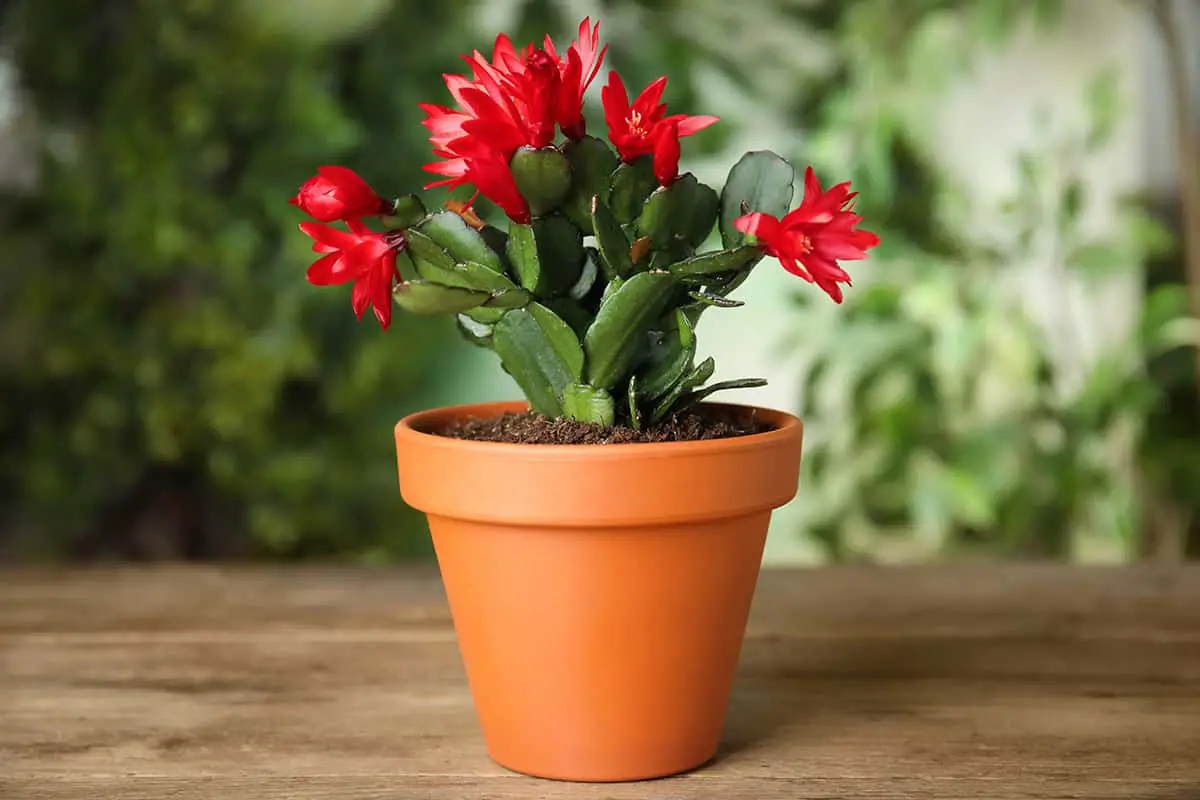
Your Christmas cactus thrives without frequent fertilization. This plant, native to Brazilian rainforests, has adapted to absorb nutrients from its environment. Schlumbergera bridgesii, commonly known as the Christmas cactus, is recognized for its beautiful flowers. It blooms prolifically even without the extra boost that fertilizers provide.
To care for your Christmas cactus, ensure it’s in well-draining soil. Adequate light and the right watering schedule are key. Water when the top inch of soil feels dry. Too much water can harm the plant more than a lack of fertilizer ever could. Keep your environment stable to see this plant flourish.
Though tough, your Christmas cactus appreciates attention during its active growth period. A light feeding of houseplant food in the spring can support its wellbeing. Come fall, as daylight shortens, your plant will ready itself for blooming with little to no help. The moisture it receives from the watering schedule can carry all the necessary nutrients for this period.
Remember, the Christmas cactus is efficient in its nutritional needs. Annual repotting provides fresh soil with enough natural sustenance.
String Of Pearls (Senecio Rowleyanus)
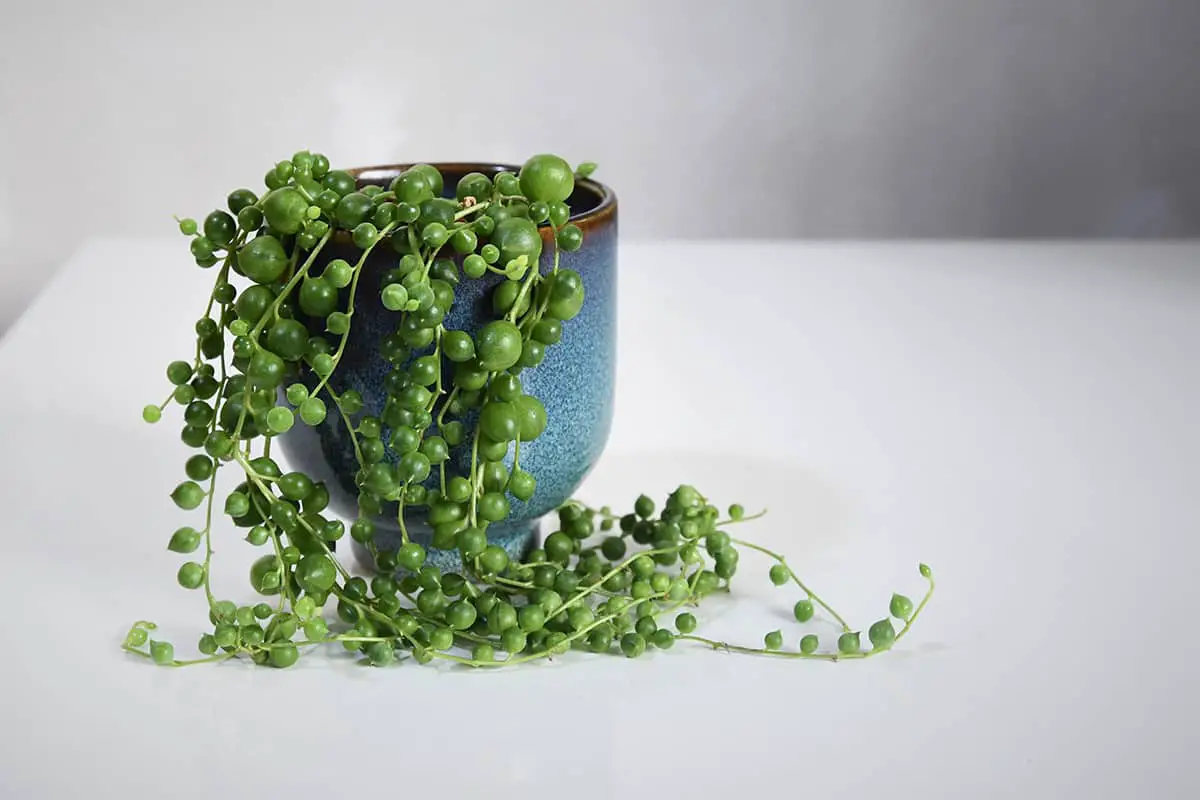
The String of Pearls plant, or Senecio Rowleyanus, is a distinctive indoor succulent. It stands out for its round, bead-like leaves that trail beautifully over the sides of containers. You will find its watering needs modest, and importantly, it rarely requires fertilizer.
Senecio Rowleyanus thrives in bright, indirect light. It’s critical to provide the right lighting to maintain its unique leaf structure. When you water this plant, do so thoroughly, but allow the soil to dry out completely between waterings. Its succulent nature allows it to store water in its leaves, offering resilience against drought.
Be mindful that Senecio Rowleyanus is toxic when ingested. It can cause nausea and skin irritation. Keep it out of reach of pets and children. Propagation is straightforward: clip a stem, remove a few bottom leaves, and plant it in moist soil. This method is easy and efficient for expanding your collection.
Given correct light and water, your String of Pearls will grow with minimal intervention. With its low fertilizer needs, it’s an excellent plant for novice and experienced gardeners alike.
